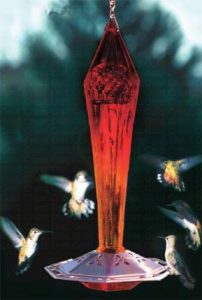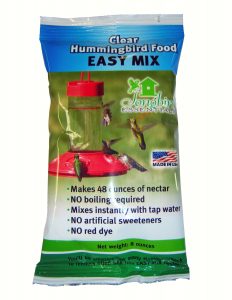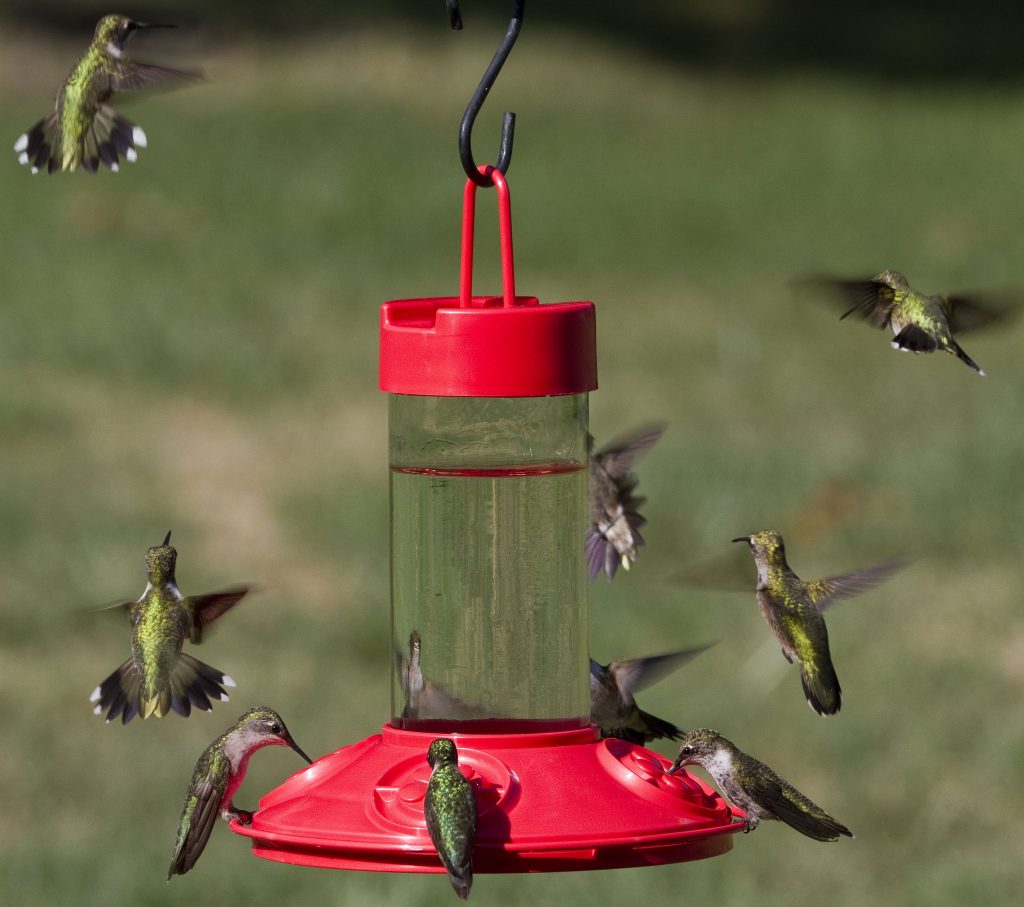By: Tristan Palmgren
Though it seems to us like the weather has only gotten a little cooler, our hummingbirds sense a big change coming. They know that migration season is on us, and they’ve started to prepare. Some of them are already on the move. You may have already noticed changes in your yards as some of the hummers you’ve been feeding all summer have left, and that you have some new arrivals that have migrated from farther north.
Hummingbird migration is one of nature’s most fascinating phenomena. When hummingbirds realize they’ll need to migrate soon, they start bulking up for the trip. They know instinctively that they’ll be expending a large number of calories soon, and they increase their energy consumption to compensate. Hummingbird nectar is typically made at a concentration of four parts water to one part sugar (and this is as true for Songbird Essentials nectar mixes as homemade nectar). During the migration season, we recommend increasing that concentration to three parts water to one part sugar.
 Songbird Essentials Super Shaker Nectar Maker
Songbird Essentials Super Shaker Nectar Maker
They need all that energy for a reason. Though some ruby-throated hummingbirds spend their winters in the very southern tip of Florida, the majority of those we see here in Missouri will cross the Gulf of Mexico to winter in Central and Southern America. Their journey will take them hundreds and hundreds of miles over the ocean in just twenty hours. And they’ll do it all in one trip, as there are few to no islands for them to stop on. They’ll traverse all this distance on wings that are just about an inch and half long, and that they need to beat forty to eighty times per second to stay aloft. It’s no wonder they eat more before they go.
 Songbird Essentials Faceted Ruby Hummingbird Feeder
Songbird Essentials Faceted Ruby Hummingbird Feeder
Hummingbirds increase their body weight enormously before migrating, nearly doubling their pre-migration weight. They then expend nearly all of that crossing the ocean. It’s one of the most arduous journeys any migratory species undertakes, let alone a species as small and vulnerable as the hummingbird. Imagine the toll on your body if, every year, you were to drastically increase your body weight and then expended of it in one concentrated burst of exercise. Hummingbirds are more adapted to these sudden gains and losses than our bodies would be, but it is still quite taxing on them.
 Songbird Essentials 8 oz Clear Hummingbird Nectar
Songbird Essentials 8 oz Clear Hummingbird Nectar
Hummingbirds have been migrating in this style for millions of years. Their lifestyle well predates human civilization. If only for our mental well-being, it’s important to remember that hummingbirds are not dependent on humans to survive. Our goal in feeding these birds is not to replace or micromanage an ecosystem, but to supplement it, and to encourage desirable and colorful visitors to come to our backyards. However, their migration does mean that the hummingbird’s dietary needs change, and those of us who provide food for them need to be aware of that fact. The same hummingbirds that frequented your feeders in spring will be looking for something different, and stronger, at the end of the season.
 Dr. JB’s Complete Switchables Available in 16 oz., 32 oz., 48 oz., & 80 oz. capacities
Dr. JB’s Complete Switchables Available in 16 oz., 32 oz., 48 oz., & 80 oz. capacities
The fact that hummingbirds not only survive this trip but have thrived as a species is one of the many traits that make them wonders of nature. Another trait is their fantastic memory and sense of geolocation. Not only do they migrate incredible distances, they can pinpoint specific locations, and return to the same backyards that they left months and months—and thousands of miles—ago. If you’ve been feeding hummingbirds regularly throughout this season, you can place a good bet that you’ll see those same birds next spring.

